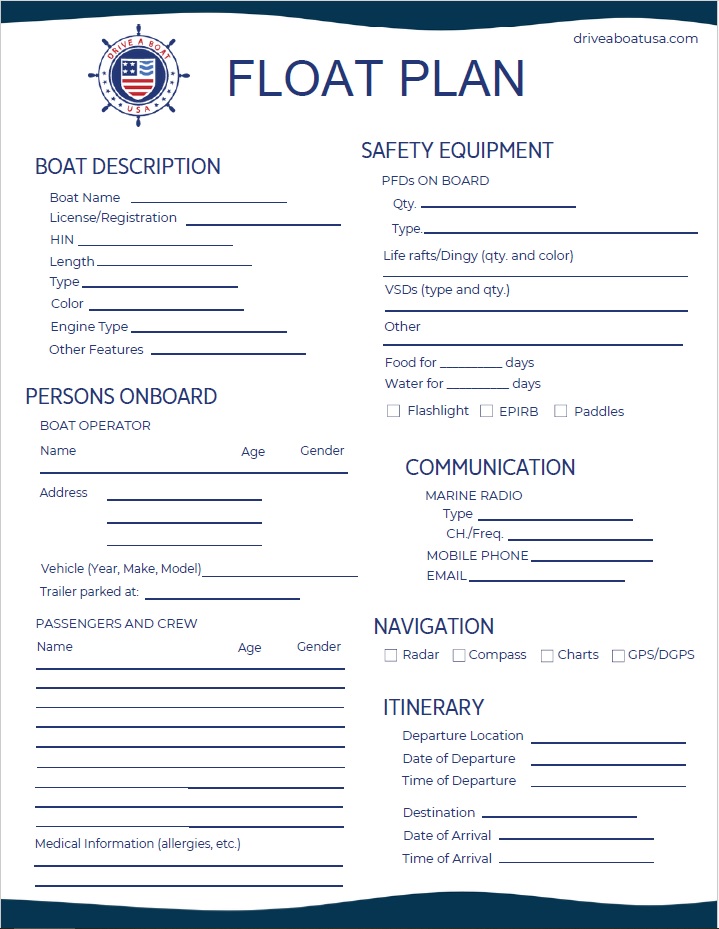What Should Be Included on a Float Plan?
It’s a good idea to share a float plan with someone trustworthy before setting off on a boat trip, especially for longer journeys.
A float plan can be presented in written or verbal form. It details crucial information about your boating location, schedule, and key aspects of your voyage.
It serves as a vital tool for search and rescue operations if an emergency arises, as it confirms your intended route and expected return time.
What information should a float plan contain?
A float plan should include the following information:
- Boat owner/operator: Name, description, and contact information.
- Vessel details: Size, type, color, registration number, length, make, horsepower, engine type and safety equipment.
- Trip information: Planned departure and return dates and times, destination, route and stopping points.
- Phone number for local authorities or the U.S. Coast Guard if boating in their jurisdiction.
Complete a float plan before your trip and share it with a reliable person who can notify authorities if you don’t return as planned.
If you want, download our Float Plan template to be sure you have included all essential information: Drive-A-Boat-USA-Float-Plan-PDF.
How to file a float plan
Filing a float plan is crucial for your safety. Here’s what you need to do:
Before you leave
Complete a float plan form or share trip details verbally. Be sure to fill out the float plan carefully, leaving nothing out. Remember, a float plan could save your life in case of storms or emergencies.
Sharing your float plan
Always inform someone trustworthy about your boating plans. Share completed forms or basic details verbally with a responsible person.
Provide details on where you’re going and when you plan to return. If you don’t show up as expected, they can contact authorities to ensure you’re safe.
Float plans can be communicated via emails, texts, phone calls, etc. Remember, sharing your float plan is essential before taking to the water!
Do not file your float plan with the Coast Guard. The USCG does not accept float plans.
Extended outings
For longer trips, leave a float plan with a relative, friend, or a local marina.
Carry communication devices
Make sure you have communication tools onboard, such as a radio or cell phone, and learn about the protocol for issuing marine distress signals. Remember, Drive A Boat USA can teach you everything you need to know about marine safety in our premium online boating course!
When you return
Inform the person holding your float plan that you’ve returned safely to avoid unnecessary Search and Rescue operations, which are costly and take time and effort away from real emergencies.
Get a state-approved boating licence from Drive A Boat USA
Filing a float plan could save your life. It’s a simple step: just note down all relevant information and share it with someone you trust. You can even communicate your float plan by phone.
Every element of boating safety is important, from wearing the right type of PFD to installing safety equipment like navigation lights, backfire flame arrestors and ventilation systems.
Don’t wait! Learn about safe boating and get your state-approved boating license, so you can confidently take to the water anywhere in the U.S.!


